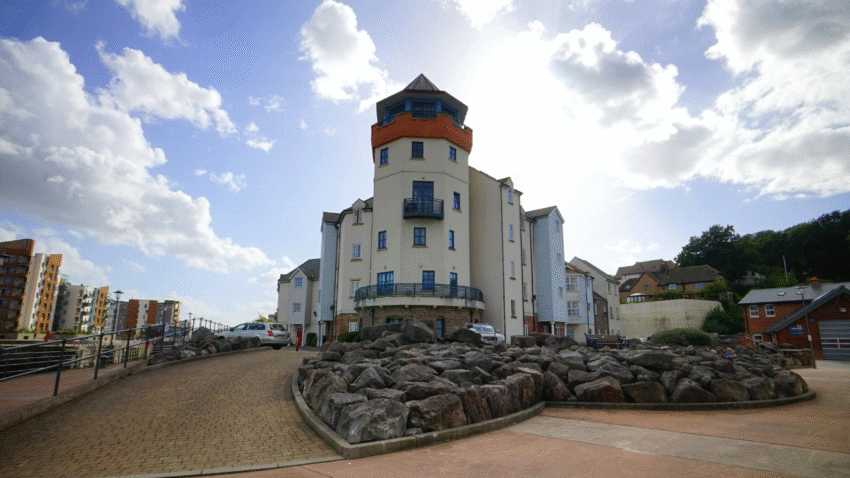Introduction
A wooden walkway adds warmth, character, and natural beauty to your outdoor space. Whether it’s a path through your garden, around your pool, or leading to your front entrance, wood creates a timeless look that blends seamlessly with the landscape. However, wood is also vulnerable to weather, moisture, and foot traffic. Without proper care, it can warp, rot, or lose its color. The good news is that with consistent upkeep, you can keep your walkway safe, strong, and attractive for years to come. In this guide, you’ll learn step by step how to maintain a wooden walkway for lasting durability and curb appeal.
Why Wooden Walkway Maintenance Matters
Wood, while beautiful, requires more attention than stone or concrete:
- Prevents rot and decay: Regular sealing protects wood from moisture.
- Enhances safety: Smooth, maintained boards prevent tripping hazards and reduce slipperiness.
- Improves appearance: Stains and sealers preserve wood’s rich color and grain.
- Extends lifespan: A well-maintained walkway can last decades rather than just years.
- Protects investment: Proper care reduces the need for costly repairs or replacements.
By making maintenance part of your yearly routine, your walkway will remain both functional and visually appealing.
Step-by-Step Guide to Maintaining a Wooden Walkway
Step 1: Inspect the Walkway Regularly
- Walk along your wooden path every few months.
- Look for signs of loose boards, nails sticking out, splinters, rot, or insect damage.
- Check for areas that stay damp after rain, which are more prone to decay.
- Make note of any repairs needed before moving to cleaning.
Pro Tip: Catching small issues early prevents major repairs later.
Step 2: Sweep and Clean the Surface
- Sweep away leaves, dirt, and debris weekly to prevent mold and staining.
- Wash the walkway seasonally with a mixture of warm water and mild detergent.
- Use a stiff-bristled brush to scrub the boards and rinse with a garden hose.
Tip: Avoid harsh chemicals, as they can strip protective finishes and harm surrounding plants.
Step 3: Power Wash Carefully (Optional)
- For heavily soiled or weathered walkways, use a pressure washer on a low setting.
- Keep the nozzle 12–18 inches above the wood to avoid gouging or splintering.
- Allow the walkway to dry completely before applying stain or sealer.
Step 4: Sand Rough or Splintered Areas
- Use medium-grit sandpaper to smooth rough patches and remove splinters.
- Sanding also helps new stain or sealer absorb evenly.
- Always sand along the grain of the wood to avoid damage.
Step 5: Repair Damaged Sections
- Replace rotting or cracked boards immediately to prevent spreading damage.
- Hammer in or replace loose nails and screws.
- For walkways near damp areas, consider using rot-resistant lumber like cedar, redwood, or pressure-treated wood for replacements.
Step 6: Apply Stain or Sealer
- Stain or seal your walkway every 1–3 years depending on climate and foot traffic.
- Wood Stain: Enhances natural grain while protecting against UV rays and moisture.
- Clear Sealer: Preserves natural wood color while adding water resistance.
- Apply with a roller, brush, or sprayer on a dry, mild day.
- Allow 24–48 hours for full curing before heavy use.
Step 7: Protect Against Moisture and Rot
- Keep surrounding vegetation trimmed back to allow air circulation.
- Remove moss or algae promptly with a scrub brush and mild cleaner.
- Ensure the walkway is slightly elevated or has proper drainage beneath to avoid standing water.
Step 8: Winterize the Walkway
- Sweep snow regularly with a plastic shovel to avoid scratches.
- Avoid rock salt, which can damage wood fibers—use sand or eco-friendly de-icers instead.
- Inspect for frost heave or shifting boards in spring after freeze-thaw cycles.
Common Mistakes to Avoid
- Mistake 1: Neglecting Sealing
Unsealed wood absorbs moisture, leading to rapid rot.
Solution: Always reseal on schedule. - Mistake 2: Using Too Much Pressure When Washing
High-pressure cleaning splinters and erodes wood.
Solution: Keep pressure low and maintain distance. - Mistake 3: Letting Debris Accumulate
Leaves and dirt trap moisture, encouraging mold and pests.
Solution: Sweep regularly and clean seasonally. - Mistake 4: Ignoring Drainage
Poor drainage keeps boards wet and accelerates decay.
Solution: Ensure water flows away from the walkway. - Mistake 5: Waiting Too Long for Repairs
Delaying repairs to rotting boards weakens the entire structure.
Solution: Replace damaged boards immediately.
Extra Walkway Tips & Hacks
- Use Anti-Slip Strips: Install grip tape or textured sealers to prevent slipping in wet weather.
- Add Lighting: Low pathway lights increase both safety and aesthetics.
- Elevate in Wet Areas: Build wooden walkways on posts or beams if installed in gardens, near ponds, or over damp ground.
- Choose the Right Stain: A UV-resistant semi-transparent stain balances protection with natural beauty.
- Regular Maintenance Calendar: Schedule inspections in spring and fall for consistent upkeep.
For additional maintenance ideas, check out our guide on how to maintain a brick driveway year-round, which includes seasonal care tips that apply to wood walkways too.
Conclusion
Wooden walkways are beautiful, but they demand care to stay functional and attractive. By inspecting regularly, cleaning thoroughly, repairing damage, and sealing on schedule, you’ll protect against rot, pests, and weathering. Add proper drainage and seasonal upkeep, and your walkway can last for decades.
Pro Tip: Consistency is key. Just a few hours of maintenance each year saves you from costly repairs and keeps your walkway safe and inviting.
